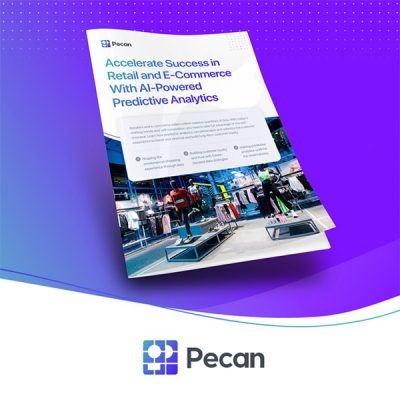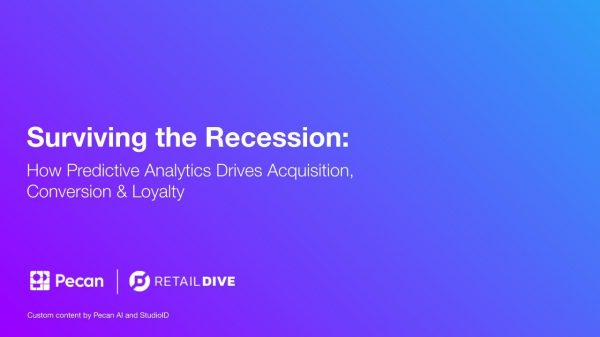Build a fantastic customer experience. Make sure it’s consistent across all the channels where you reach customers. And, of course, personalize it, so customers know how much they mean to you and will remain loyal to your brand.
That’s no small order. But today’s retail industry and e-commerce businesses must address this challenge while contending with difficult economic conditions and fickle, complex customer behavior. It’s no surprise marketing leaders find it difficult to make data-driven decisions, whether to address day-to-day concerns or improve higher-level strategies. One way to reduce that difficulty might be to use their data differently than in routine, retrospective data analytics.
Using data to anticipate customer behavior
Retail businesses and online sellers have a terrific resource: large quantities of data they can use in predictive models. That data could include purchase history, panel data, loyalty programs, web and app activity, email campaigns, social media, customer profiles, and so much more.
Predictive models built on that data can help these businesses foresee and proactively plan for customer behavior and emerging market trends. Machine learning algorithms can use your customer and transaction data to identify customer buying patterns. Then, they use current data to predict what customers might do next. There are multiple applications of predictive analytics in retail and e-commerce that offer invaluable data-driven insights.
Predictions can be used to boost upsell/cross-sell success, reduce churn, and craft future-focused customer segments for personalization. These methods support marketing leaders seeking to dial in ad spend, improve their marketing campaigns, and increase sales.
Agile adaptation to changing customer expectations
The challenge of high customer expectations is not new, but it is intensifying. In a recent Salesforce survey, 71% of marketers said meeting customer expectations today is more difficult than a year ago. Customers are now accustomed to personalized omnichannel shopping experiences in online retail and brick-and-mortar stores.
The applications of predictive analytics in e-commerce and retail are still new to many business leaders. Fortunately, predictive analytics is proven to help e-commerce and other retailers improve customer experience — and their bottom line.
Grab our new guide to dive deeper into how predictive analytics can accelerate success in retail and e-commerce.
This guide showcases meaningful predictive strategies you can implement for rapid business impact. We provide research, explanation, and examples that demonstrate the potential of six specific approaches you can start with today:
- Lead scoring
- Likelihood to opt-in or subscribe
- Conversion optimization
- Customer lifetime value and VIP identification
- Customer churn & retention
- Customer upsell & cross-sell
If you’d rather listen than read — or multitask by listening and reading! — check out the on-demand video of our recent virtual discussion, co-hosted by Retail Dive. It features expert guests Ron Thurston, “Retail in America” host and bestselling author; Angelina Eng, VP of Measurement and Attribution at IAB; and Pecan’s own Danielle Gotkis, SVP of Global Marketing. They chat about how you can leverage predictive analytics and customer data to act faster, be more innovative, and execute with more agility during an unstable market.
Watch our on-demand discussion of using predictive analytics in retail and e-commerce.
Finding the future within retail and e-commerce data
This moment in time may be challenging for retail and e-commerce businesses. But predictive analytics can put your data to work so you can thrive in these challenging times. We hope these resources will help you explore this possibility and evaluate whether it’s the right next step for your business.
Let us know how we can help you find the predictive strategies that work for your retail or e-commerce business. We’re here to guide you through the process.





